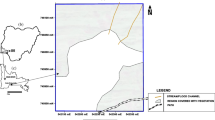Summary
Hammer seismics and electrical resistivity soundings have been used in engineering geological field research work to study the application of simple geophysical methods in soil mapping for land-use planning.
The hammer-seismograph employed, with decimal time display, is on the average effective to depths of 25 metres, but this type of instrument has considerable disadvantages compared to hammer-seismographs with other recording systems.
Electrical resistivity soundings with small, a.c. equipment (“Earth Testers”) are reliable and interpretable to depths varying from approximately 30 metres in conductive soils to about 100 metres in resistant ground. We have found that semi-empirical interpretation methods have the necessary accuracy for regional mapping purposes.
A combination of the two geophysical methods and simple mechanical soundings provides necessary basic information in regional engineering geological soil mapping, and the outlined method leads to considerable reductions in field costs.
Résumé
La sismique au marteau et les sondages de résistivité électrique ont été utilisés au cours d'un travail de recherche géotechnique sur le terrain, pour étudier l'application de méthodes géophysiques simples à la cartographie des sols en vue de la planification de l'utilisation des terres.
Le séismographe à marteau utilisé affiche les résultats sur une échelle décimale; il est efficace jusqu'aux profondeurs de 25 m en moyenne, mais ce type d'instrument présente maints inconvénients par rapport aux séismographes à marteau pourvus d'autres systemes de lecture.
Les sondages de résistivité électrique effectués avec un équipement „a.c.” de petit format „Earth Testers” fournissent des informations exactes et interprétables jusqu' à des profondeurs comprises entre 30 m (dans les sols conducteurs) et 100 m (dans les sols résistants). Nous avons trouvé que les méthodes d'interprétation semi-empiriques sont suffisamment exactes pour les besoins de la cartographie régionale.
L'association des deux méthodes géophysiques et de simples sondages mécaniques fournit l'information de base nécessaire à la cartographie géotechnique régionale des sols, et la méthode esquissée permet d'importantes réductions des frais de terrain.
Similar content being viewed by others
References
BARNES H.E. (1954): Electrical Subsurface Exploration Simplified. Roads and Streets, May 1954, pp. 81–84.
DEARMAN W.R.—FOOKES P.G. (1974): Engineering Geological Mapping for Civil Engineering Practice in the United Kingdom. Q. Jl. of Engng Geol., 7, 223–256.
FRANKLIN A.G.—McLEAN F.G. (1973): A test of the Barnes Layer Method of Resistivity Interpretation. Bulletin of the Association of Engineering Geologists, X, No. 1, 65–75.
HOBSON G.D. (1967): Seismic Methods in Mining and Groundwater Exploration. Economic Geology Report No. 26, Geological Survey of Canada, 148–176.
HOLMSTRAND O.—WEDEL P.O. (1977): Ingenjörgeologisk kartering. Redovisning av i första hand jordlager och grundvatten. Chalmers Tekniska Högskola, publ. A17, Göteborg.
JOHANSSON S. (1966): On the hammer-seismograph model FS-2 and its use in Finland. Geophysical Prospecting, 14, 185–194.
KORPELA K. (1976): Hammer seismic sounding as an engineering—geologic investigation method. Papers of the Engineering Geological Society of Finland, 10, Helsinki.
LENNOX D.H.—CARLSON V. (1967): Geophysical Exploration for Buried Valleys in an Area North of Two Hills, Alberta. Geophysics, XXXII, No. 2, 331–362.
REITE A.J. (1976): TRONDHEIM, Kvartaergeologisk kart 1621 IV-M 1:50.000. Norges geologiske undersøkelse.
SANKER NARAYAN P.V.—RAMANUJACHARY K.R. (1967): An Inverse Slope Method of Determining Absolute Resistivity. Geophysics, 32, No. 6, 1036–1040.
Author information
Authors and Affiliations
Rights and permissions
About this article
Cite this article
Hugdahl, H., Dahl, R. Mapping of soils for engineering and planning purposes, application of simple seismic, resistivity and boring techniques. Preliminary results. Bulletin of the International Association of Engineering Geology 19, 275–279 (1979). https://doi.org/10.1007/BF02600488
Published:
Issue Date:
DOI: https://doi.org/10.1007/BF02600488




